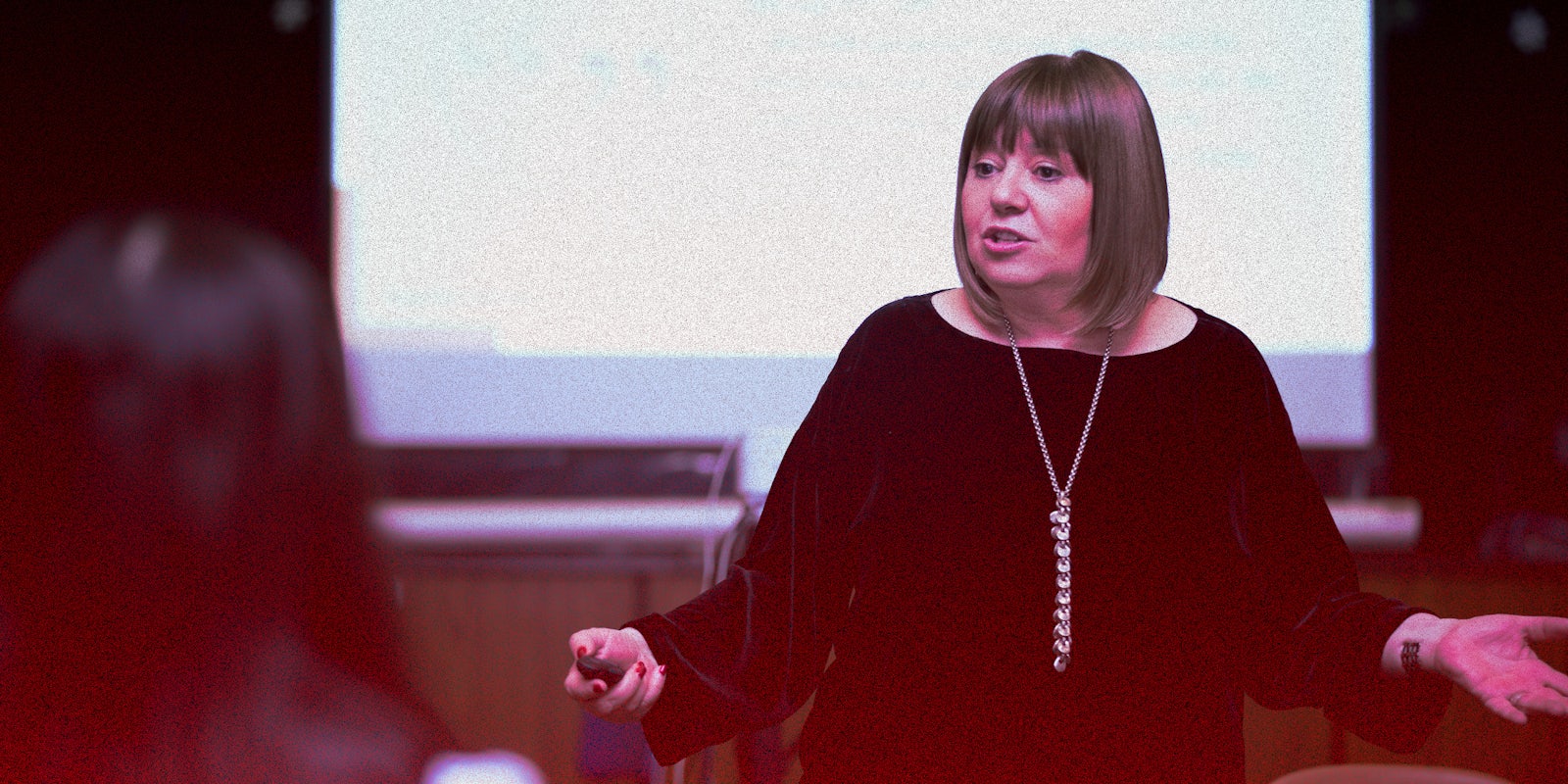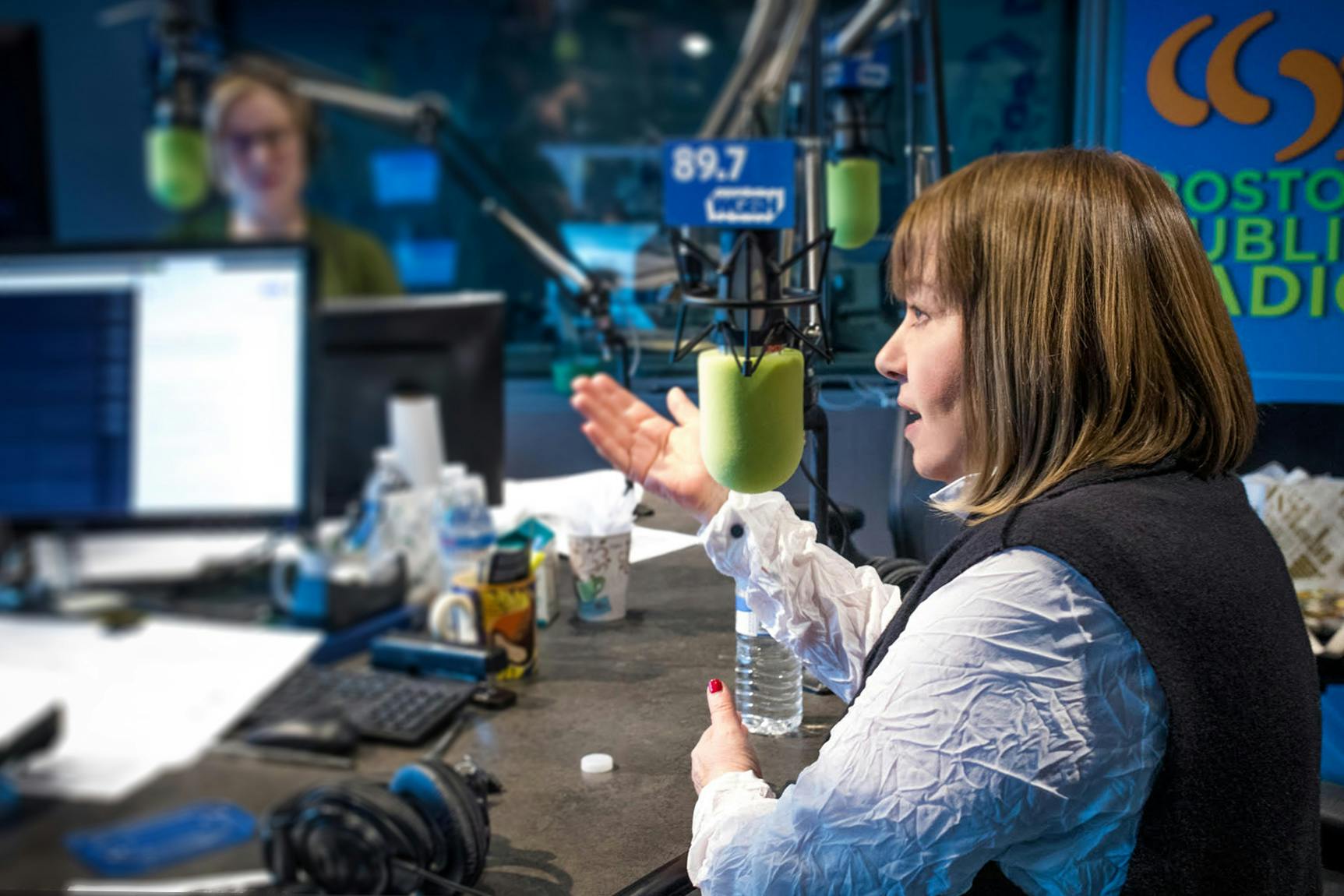Opinion
Ask any feminist with an anti-porn stance how they feel about sex work, and somewhere along the line, they’ll bring up Gail Dines. The British sociologist and radical feminist’s work waxes lyrical about porn consumption as a public health crisis, and her books Pornland: How Porn Has Hijacked Our Sexuality and Pornography: The Production and Consumption of Inequality are considered cornerstones in feminist anti-porn studies. Her beliefs show disdain for sex workers and fall into sex worker-exclusionary radical feminist (or SWERF) territory.
“If you got rid of poverty and racism and global capitalism, and weren’t really desperate for money, I wonder how many women would really volunteer to be in porn,” Dines once said, according to USA Today. “There’s a reason you don’t have women with Ph.D.s and law degrees lining up to do porn, and that’s because they have options.”
This is false: Academics are known to do sex work and forced to grapple with whorephobia in the workplace as a result. Last year, the Chronicle published a story about a professional dominatrix who holds a doctorate, Mistress Snow, who lost a letter of recommendation because her dissertation advisor did not like her career as a sex worker. Snow now works as a professor while still doing sex work.
Nevertheless, the Boston Globe gave Dines a glowing profile about her anti-porn work in an article this week titled “How to build your children’s resilience to porn.” The article does not include any members of the adult industry. And in an offensive move for any sex worker impacted by COVID-19, Dines is capitalizing on the coronavirus pandemic by pushing her own views that conflate widespread porn access to a public health crisis.
“Kids are more at risk than they’ve ever been. This is a pandemic within a pandemic,” Dines told the Globe. “Parents can’t monitor as much as they did because they’re just overwhelmed with homeschooling and having kids home through the summer.”
Throughout the article, Dines says “masturbating to porn desensitizes boys to violence” and “trains them to become aroused by increasingly shocking acts.” The Globe does not clarify what “violence” or “shocking acts” means. Is Dines implying young men who watch porn might find BDSM more exciting than they did in the past and increasingly explore their interest in Domination/submission and sadomasochism? This seems likely given how Dines twists language around BDSM: She has called consensual sexual choking “sexually abusive,” argues 50 Shades of Grey glorifies “violence against women,” and that bondage porn is “what men like to do women politically, socially and economically: Render us completely helpless!” She has also argued against the term “sex work” by claiming it “renders invisible the violence done to women.”
Yikes.
Dines has a history of peddling half-truths and sweeping generalizations about the sex trade and then writing them off as feminist fact. When Republicans in the Utah House of Representatives declared porn “a public health hazard,” she praised the move in the Washington Post by claiming porn “is an industrial product that shapes how we think about gender, sexuality, relationships, intimacy, sexual violence and gender equality—for the worse.” Despite her insistence, very little of her article proves “the science is there” to defend her argument. The rest of her piece cherry-picks studies on porn consumption by college-aged men, which she writes about from a purely heteronormative standpoint: straight, cis men consume porn, and straight, cis women are victimized by it.
Like many SWERFs, Dines rarely considers that misogynistic content in porn may be a symptom, not a cause, of much larger sociocultural woes. Dine compares porn usage to drug addiction, an idea peddled by the Mormon-affiliated anti-porn nonprofit Fight the New Drug, with which Dines has collaborated in the past. Therapists and scientists are increasingly pushing back against the idea that porn inherently damages the brain. Clinical psychologist David Ley has criticized the drug addiction model for relying on “brain-related lingo” like “dopamine bursts” and “desensitization” to argue the public health claim. According to one study Ley cites, electroencephalogram tests on compulsive porn users revealed the results were “not at all consistent with sex addiction theory” as “participants overall demonstrated increased electrical brain responses to the erotic imagery they were shown, just as shown in the brains of ‘normal people’ in hundreds of studies,” Ley writes.
“The increasing weight of scientific investigation, as opposed to speculation and theorizing, is indicating that sex addiction is not a distinct construct, but reflects the behaviors of individuals with higher levels of sexual desire and libido, especially as those behaviors lead people into conflict with social values around sex,” Ley wrote for Psychology Today.
Academics are increasingly alarmed with the sociocultural bias in anti-porn work. One 2016 academic review from the Journal of Sex Research suggested anti-porn conclusions in scientific studies aren’t inherently based on scientific data but “culturally based public concerns,” and that adolescent porn consumption may be correlated with “great sexual knowledge, sexual self-efficacy, or sexual self-esteem.” In other words, Dines’ porn-as-public-health-crisis rhetoric has infected the social sciences to the point where she can cherry-pick studies that regurgitate her political beliefs back to her, and she can get bylines in the Post and interviews in the Globe. It’s a great grift.
Dines warns that porn has a corrupting focus on women, arguing, as the Globe notes, porn’s “images focused on male pleasure and fantasy” mean “girls have been trained not to expect sexual satisfaction and to focus their own lens, too, on the male experience.” But Dines’ arguments don’t take into account that women are prominent porn consumers, and they’re a growing demographic in the adult industry. According to Pornhub’s 2019 year in review, 32% of all global visitors to Pornhub were women, which is a 3% increase from the year prior. In the Philippines and Brazil, women make up nearly half of Pornhub visitors. And women spend more time watching porn than men, averaging just over one minute longer on Pornhub than men, according to a 2017 report by the Cut.
Dines frames porn usage as young women inserting themselves into media by and for men, but many of these female Pornhub viewers have queer tastes—or at least queer-aligned ones. “Lesbian” remains a top keyword with women. Women’s growing interest in porn points to a growing demand for media that not just centers women’s sexual desires, but lets them freely discover themselves and their interests through pornography. A May 2015 article published in Porn Studies concluded “feminist pornography offers a unique ‘heterotopia’ for a particular population of female, feminist-identified consumers to actively explore sexual practices and develop sexual subjectivity.” But if you only read Dines’ writing on porn, you would never know that porn consumption is a diverse field filled with all sorts of sexualities, genders, and bodies. This is by design: Dines and her anti-porn organization Stop Porn Culture famously promoted a petition to shut down the peer-reviewed academic journal Porn Studies in 2013.
Meanwhile, Dines and her fellow SWERFs might be surprised to learn it’s women, not men, who enjoy BDSM content the most: Women are 86% more likely to seek out BDSM content than men on Pornhub according to a study from late July. Keywords like “spanked and fingered,” “dominant submissive,” “bdsm gangbang,” “tied up vibrator orgasm,” “spanking punishment,” “lesbian bdsm,” “sadism,” and even “bdsm hardcore” are all far more popular with women than men. This just proves what queer sex workers have known for quite some time: Women are just as perverted as men.

It’s unclear why Dines is so obsessed with disparaging adult content, although money may be one explanation. Besides her two books, numerous academic articles, and myriad speaking events, her nonprofit initiative Culture Reframed offers courses to help parents “raise kids who are porn-resilient and resistant,” and while these are available for free, the organization also monetizes them for conferences, seminars, and other events.
“Unrestricted use of pornography affects the brain and can lead to habituation and addiction,” Culture Reframed warns parents. “Just because something is arousing or pleasurable doesn’t mean it is positive.”
But Dines’ approach to dealing with this fabricated moral panic is frightening. SWERF rhetoric has far more in common with fascism than feminism, and Dines’ courses promise to rob young people of their ability to appreciate adult material when they come of age by conditioning them to avoid porn and associate it with shame and disgust. In feminist journalist Judith Levine’s (highly controversial) 2002 book Harmful to Minors: The Perils of Protecting Children From Sex, Levine reveals sexual predators are more likely to come from households where sexual material was less common at home, not more.
“Evidence of the harm of exposure to sexually explicit images or words in childhood is inconclusive, even nonexistent,” Levine wrote. “Interviewers of sex criminals including child molesters reveal that the children who eventually became rapists were usually exposed to pornography less than other kids; if they’d seen the same amount, the exposure had not occurred earlier in life than the other children’s.”
Of course, none of this data is taken into consideration when anti-porn legislature is on the table, Levine warns, because “the moral wisdom of shielding minors from sexy material is seen as self-evident.” This includes non-sexual material, too, such as nude artwork and access to sex education material. If the ultimate conservative goal is to “scrub the public space clean of sexuality entirely” under claims that “any explicit sexual information” can hurt children, Levine says, then that goal originated partially from anti-porn feminists like Dines.
“Feminist worries about children’s vulnerability to adult sexual desire gradually reified in a therapy industry that taught itself to uncover abuse in every female patient’s past,” Levine wrote. “Religious conservatives, mostly middle-class women who felt their ‘traditional’ families threatened by the socials-exual upheavals of the time, translated that concern into the language of their own apprehension.”
The Globe, without providing pushback to this legacy, has given Dines a platform to spread misinformation that could chill speech on sexual education and pornography. Take it from a sex worker who grew up in the Dines legacy and lived through the moral panic Levine writes about. The language seen in Culture Reframed was the exact same kind that my school board would bring into our health classes to warn us about how having sex before marriage would pollute women’s bodies, how porn would harm our sex drives, and, as early as middle school, that seeking out a sex worker was equivalent to committing sexual assault. In retrospect, the whorephobic and anti-sex propaganda I grew up with left me with a deep sense of sexual shame that sounds eerily familiar to the anti-sex torture scenes explored in excruciating detail throughout Tina Horn’s SFSX.
“Professional feminist academics like Gail Dines make their living off appropriating [sex workers’] experiences, our anger, and our struggles as ideological talking points, with the presumption that they’re a mouthpiece for all women as a monolithic class with shared interests, a ‘voice for the voiceless,’” sex worker Luna Celeste writes in Grin and Bare It All: Against Liberal Conceptions of Sex Work.
Protecting children from online sexual predators is urgent, especially in today’s quarantine-induced loneliness, where vulnerable teens may be manipulated, exploited, or pressured into sexual contact by adults. But fear mongering around online porn isn’t going to win any points with young teens exploring their sexuality with each other. Dines’ SWERF talking points mirror the very same moral panic that millennials grew up with during the ’90s and 2000s internet boom, complete with classrooms filled with endless anxiety about unmoderated online internet usage. Fear mongering didn’t work then, and it won’t work now.
The Gail Dines of the world cannot keep teens away from exploring their sexualities. So instead of shaming teens for exploring a healthy and natural curiosity about themselves and their bodies, we should be ready to teach teens what they need to know about having safe sex with each other offline and online. That’s a problem that can only be solved by being open and honest about porn’s positives and its flaws, an issue that Dines and her supporters obfuscate for a SWERF grift the Boston Globe seems happy to peddle.
Correction: This article has been updated to clarify that Mistress Snow held a doctorate degree before her adviser pulled her letter of recommendation.

